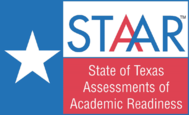The High School Proficiency Assessment was a standardized test that was administered by the New Jersey Department of Education to all New Jersey public high school students in March of their junior year until 2014-2015 when it was replaced by the PARCC. Together with the New Jersey Assessment of Skills and Knowledge, which was administered in grades 3–8, the HSPA was part of a battery of tests used to assess student performance in New Jersey's public schools.
The California High School Proficiency Exam (CHSPE) was an early exit testing program established under California law. Testers who passed the CHSPE received a high school-equivalent diploma from the California State Board of Education. All individuals and institutions subject to California law that require a high school diploma are required to accept the CHSPE diploma as requirement fulfillment. The U.S. Office of Personnel Management has ruled it acceptable in federal civilian employment applications, and the U.S. Department of Education recognizes the CHSPE as a high school diploma equivalent for various purposes, including financial aid applications.

The Texas Assessment of Knowledge and Skills (TAKS) was the fourth Texas state standardized test previously used in grade 3-8 and grade 9-11 to assess students' attainment of reading, writing, math, science, and social studies skills required under Texas education standards. It is developed and scored by Pearson Educational Measurement with close supervision by the Texas Education Agency. Though created before the No Child Left Behind Act was passed, it complied with the law. It replaced the previous test, called the Texas Assessment of Academic Skills (TAAS), in 2002.
The Washington Assessment of Student Learning (WASL) was a standardized educational assessment system given as the primary assessment in the state of Washington from spring 1997 to summer 2009. The WASL was also used as a high school graduation examination beginning in the spring of 2006 and ending in 2009. It has been replaced by the High School Proficiency Exam (HSPE), the Measurements of Students Progress (MSP) for grades 3–8, and later the Smarter Balanced Assessment (SBAC). The WASL assessment consisted of examinations over four subjects with four different types of questions. It was given to students from third through eighth grades and tenth grade. Third and sixth graders were tested in reading and math; fourth and seventh graders in math, reading and writing. Fifth and eighth graders were tested in reading, math and science. The high school assessment, given during a student's tenth grade year, contained all four subjects.
Arizona's Instrument to Measure Standards (AIMS) was a standardized test administered by the state of Arizona. AIMS was a standards-based assessment aligned with the Arizona Academic Content Standards. In November 2014, the Arizona State Board of Education voted to replace AIMS with a new test called AzMERIT (Arizona's Measurement of Educational Readiness to Inform Teaching).
In New York State, Regents Examinations are statewide standardized examinations in core high school subjects. Students are required to pass these exams to earn a Regents Diploma. To graduate, students are required to have earned appropriate credits in a number of specific subjects by passing year-long or half-year courses, after which they must pass at least five Regents examinations in some of the subject areas. For higher-achieving students, a Regents with Advanced designation and an Honors designation are also offered. Students with disabilities or enrolled in an English as a Second Language program are able to earn a local diploma.
The Ohio Graduation Test (OGT) is the high school graduation examination given to sophomores in the U.S. state of Ohio. Students must pass all five sections (reading, writing, mathematics, science and social studies) in order to graduate. Students have multiple chances to pass these sections and can still graduate without passing each using the alternative pathway. In 2009, the Ohio legislature passed an education reform bill eliminating the OGT in favor of a new assessment system. The development and transition of replacement began in 2014 and ended in 2022.
The Standards of Learning (SOL) is a public school standardized testing program in the Commonwealth of Virginia. It sets forth learning and achievement expectations for core subjects for grades K-12 in Virginia's Public Schools. The standards represent what many teachers, school administrators, parents, and business and community leaders believe schools should teach and students should learn. The Virginia Department of Education, schools, and school systems routinely receive essential feedback on the effectiveness of implementation and address effective instructional strategies and best practices. The Standards of Learning is supportive of and a direct response to the No Child Left Behind Act, which was signed into law by then-President George W. Bush on January 8, 2002. They address student achievement in four critical areas: (1) English, (2) mathematics, (3) science, and (4) history/social studies. Students are assessed in English and mathematics in grades 3-8 and upon completion of certain high school level courses. Science and history SOL are administered in grades 4, 5, and 8 and at the end of completing high school courses in these respective subjects.
The California Assessment of Student Performance and Progress (CAASPP), known until February 2014 as the Measurement of Academic Performance and Progress (MAPP), measures the performance of students undergoing primary and secondary education in California. In October 2013, it replaced the Standardized Testing and Reporting (STAR) Program.
The California High School Exit Examination (CAHSEE) was an examination created by the California Department of Education, that was previously mandated to administer in high schools statewide in order to graduate. The examination was suspended in 2015, when Governor Jerry Brown signed a bill undoing the decade old requirement. It was originally created by the California Department of Education to improve the academic performance of California high school students, and especially of high school graduates, in the areas of reading, writing, and mathematics. In addition to other graduation requirements, public school students needed to pass the exam before they could receive a high school diploma.
The Minnesota Graduation Standards, also known as the Profile of Learning and the Minnesota Academic Standards, created in 1998, were intended to raise standards of education for Minnesota high school students. The Minnesota Graduation Standards were developed to ensure minimum competence in survival skills for all Minnesota graduates from high school. The standards included two parts: the Minnesota Statewide Assessments and the Minnesota Academic Standards.
The Georgia High School Graduation Test, or GHSGT, was administered to all students in the eleventh grade in the US state of Georgia from 1991 to 2013. It determined whether or not a student was eligible to graduate from a Georgia high school.
An exit examination is a test that students must pass to receive a diploma and graduate from school. Such examinations have been used in a variety of countries; this article focuses on their use within the United States. These are usually criterion-referenced tests which were implemented as part of a comprehensive standards-based education reform program which sets into place new standards intended to increase the learning of all students.
The West African Senior School Certificate Examination (WASSCE) is a type of standardized test in West Africa. Students who pass the exam receive a certificate confirming their graduation from secondary education. It is administered by the West African Examinations Council (WAEC). It is only offered to candidates residing in Anglophone West African countries. The academic school-leaving qualification awarded upon successful completion of the exams is the West African Senior School Certificate.
The End of Course Test is an academic assessment conducted in many states by the State Board of Education and Island of Bermuda. Georgia, for example, tests from the ninth to twelfth grades, and North Carolina tests for any of the four core class subjects.

Education consists of public and private schools in the U.S. state of Georgia, including the University System of Georgia, Technical College System of Georgia, private colleges, and secondary and primary schools.
Indiana Statewide Testing for Educational Progress-Plus was an annual No Child Left Behind test designed by the Indiana Department of Education to measure students' mastery of basic skills, particularly reading, writing, and mathematics. Before 2009 it was administered in the fall; beginning the 2009–10 school year it was administered in the spring. All students in grades 3 through 8 and high school sophomores took the ISTEP+ each spring, with language arts and math covered in each test. Additionally, students in grades 4 and 6 were tested in science and 5 and 7 on social studies. The test consisted of two components: a written test and a Multiple-choice test over the same subjects (April). It was replaced by iLearn in 2018.

The State of Texas Assessments of Academic Readiness, commonly referred to as its acronym STAAR, is a series of standardized tests used in Texas public primary and secondary schools to assess a student's achievements and knowledge learned in the grade level. It tests curriculum taught from the Texas Essential Knowledge and Skills, which in turn is taught by public schools. The test used to be developed by Pearson Education every school year, although the most recent contract gave Educational Testing Service a role in creating some of the tests, under the close supervision of the Texas Education Agency.
A high school diploma is a diploma awarded upon graduation of high school. A high school diploma is awarded after completion of courses of studies lasting four years, typically from grade 9 to grade 12. It is the school leaving qualification in the United States and Canada.



